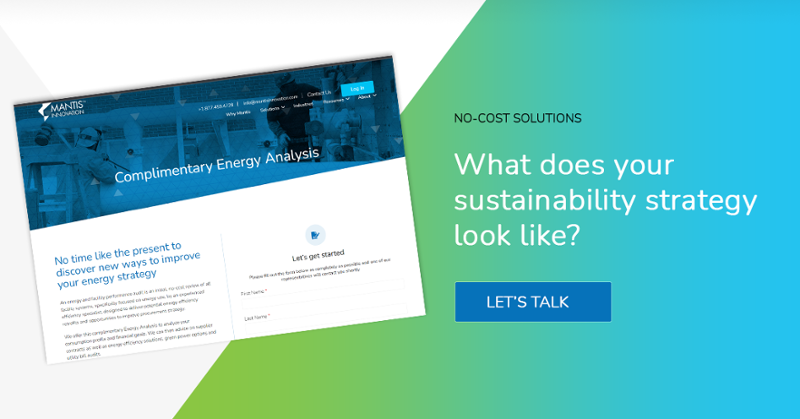Energy Efficiency | September 29, 2020
3 Ways to Avoid Substandard LED Lighting Energy Efficiency Products
When you invest in an energy efficiency project, what are you putting your money into? Are you looking for a quick fix for an issue, or a long-lasting solution? Do you want a short-term band-aid or a system of energy efficiency products optimized to perform better than the one you have in place?
These are all essential considerations when looking at any large investment, especially an energy efficiency project. And for an LED lighting project, it’s easy to veer towards that quick fix or band-aid solution. Many companies initially have good reasons for choosing the least expensive products:
- No allocated budget
- Operational cost cutting
- Inexperience with energy solutions
- Simple payback
When exclusively looking at cost, the least expensive choices seem to make the most sense. Buy inexpensive products and you’ll pay them off sooner. However, this line of thinking fails to consider all the aspects of efficiency project investments, including tailoring a solution specific to the end-use of the space vs a “one size fits all” mentality, opportunity costs, system lifetime and maintenance costs, or available utility incentive money to offset cost. I’ve seen examples of this time and time again, where businesses across industries choose the least expensive way to fix a problem based solely on immediate ROI and end up having to redo the project only a few years down the road.
When you’re making choices about facility lighting, you’re making a long-term decision, which means you want to fully understand what your investment means over the next 10+ years. There are many aspects of an LED lighting project to look at, but I’ve broken down the three key considerations for a successful LED lighting project investment.
How to avoid commercial lighting projects that don’t last:
-
Understand the products
-
Trust your suppliers
-
Know your industry
Understand the products: what to know about LED lighting equipment solutions
When making a purchase – especially a large one – you want to know what you are buying. For something that should last decades, you’ll want information about the manufacturer, technical specifications, quality, longevity, flexibility as space requirements may change, controllability and the ability to augment with add-ons over time. If you’re just looking at initial cost, you’re not considering these aspects of your lighting purchase.
I’ve seen this done before with disastrous effects resulting in inappropriate light levels that may be grossly over-lit — not only from a visual comfort perspective but also using more energy than needed — or under-lit for the task at hand and/or safety. I’ve also seen systems that had to be replaced entirely.
Unfortunately, this can be common:
- We’ve seen the result of an installation of a LED lighting product that turned green in a chain of gas stations across the country.
- We worked with a real estate company that had previously used a band-aid solution of CFL lamps that ended up needing to be replaced within a few years.
There are many examples, but all the same story in the end: a company chooses a project based on product cost, without enough information, and ends up installing lighting that lasts for a fourth or fifth of the time better products can.
What the right fixture should provide for you
Knowing your product means that you trust the product your purchasing is quality in comparison to others on the market. You should trust that your lighting fixtures are reliable, fit your needs, and will last for years to come.
Trust your suppliers: where to source reliable LED energy efficiency products
Product warranties are only helpful if you can trust the company supplying them. You should be asking yourself:
- What is the reputation of the manufacturer?
- If there is an issue with their product will they stand behind it to resolution?
- How long have they been in business and will they still be around in coming years should a warranty scenario occur several years later?
These are essential to know your manufacturer well. This isn’t an easy task, and it requires a lot of research and experience working with different companies for energy supplies and services. Knowing your manufacturer, however, is a good way to know the products you’re getting are reliable, and that if they malfunction, you can rely on warranties to get replacements.

Know your industry: how to prepare yourself for an LED lighting upgrade
The key to gaining trust in your products and your suppliers is simple: you need to know the industry. This concept is obvious, but knowing the industry is a complex and difficult task. It requires expertise, deep knowledge of product offerings, constant education on new options for lighting, and the ability to discern what products and companies to trust. This also requires the ability to rely on multiple companies and find the best products for the project, as opposed to only sourcing from one company with limited offerings.
So, how do you know the industry? You have to work with a company that works within it. If you’re working in facility management in healthcare, education, manufacturing or any other large commercial building for that matter, you’re naturally immersed in and focused on the energy needs specific to your industry, among many other concerns within the facilities. Placing extensive knowledge of all the options for lighting on top of that is a nearly impossible task. Instead, working with a turnkey energy engineering or sustainability firm allows you to allocate that task to a company that specializes in it.
Making the right choices for energy efficiency products
Ultimately, deep knowledge of the energy services industry is required to make the best choices regarding which products to install – and which to avoid. However, there are a few ways to make sure you’re investing in your lighting in the best possible way:
-
Install LED lighting systems that have been tested and approved by independent organizations such as Energy Star or Design Lights Consortium.
These organizations provide independent analysis and corroboration of product performance and life expectancy claims by the manufacturer.
-
Install high efficiency LED lighting fixtures instead of standard LEDs:
There are two major efficiency tiers for LED lighting: Standard, which is a basic offering, and High Efficiency. Just as you would look at miles per gallon when purchasing a new car, one should look at lumens per Watt when evaluating lighting systems.
Fixtures with higher lumens per Watt provide the same level of lighting (lumens) at lower energy consumption (Watts). While the high efficiency LED lighting has a slightly higher price, they provide significantly greater savings and utility incentives resulting in a comparative and/or better ROI. Don’t shop around for the lowest possible price.
Obviously, choosing a lower cost installation can be ideal. However, looking for the lowest cost, as opposed to efficiency, functionality, the ability to fine tune and adjust lighting, or product quality, you may most likely have to replace your lighting again after only a few years but most importantly, you will be losing out on additional savings over the life-cycle of the system.
-
Install controls with your LED lighting upgrade:
If you’re looking to maximize your ROI, lighting controls should be installed with an LED lighting upgrade. With the advent of fixture-integrated controls, you can gain occupancy and daylight harvesting capabilities built right into the fixture for a slight upcharge but with no additional labor cost to install. Unlike past occupancy controls needing to be laid out for appropriate coverage of the space, a sensor integrated into the fixture provides blanket over-lapping coverage at every fixture location.
-
Seek out expertise and experience:
By reading about products, speaking with others to learn their experiences with specific products and companies, or working with a trusted energy engineering company, you can ensure that you’re getting the best LED lighting for your money and facility, saving the most energy with the highest utility incentive you can qualify for.
Ultimately, what’s better for your business: frequent, slightly smaller patch-work investments with great ROIs, or a comprehensive, holistic investment to optimize ROI that will meet your exacting needs and last you for numerous years to come? This is the decision you’re making, so make sure you know what energy efficiency products you’re buying.
Related Posts
Discover more content and insights from Mantis Innovation

The Cost of Inaction: Why Businesses Should Act Now on Energy Efficiency
In today's fast-paced business environment, the financial and operational losses businesses incur by delaying energy efficiency improvements, the "cost of inaction," is more relevant than ever.

In today’s AI era, human intelligence is the key to data center facility and energy optimization
Nowhere else in modern industry do artificial and human intelligence converge with such transformative potential as in the world of data centers. As AI's extraordinary growth accelerates demand for

Your Guide to LED Lighting for Business and Commercial Buildings
Never to be underestimated, LED lighting and well-designed lighting retrofits and upgrades offer businesses big improvements like reduced energy costs, reduced emissions, and improved working

Five Trends Driving Data Center Facility Energy Optimization
Today’s digital economy, commercial and industrial digitalization, and the recent explosion in artificial intelligence and machine learning (AI/ML) powered computing are driving massive growth in
